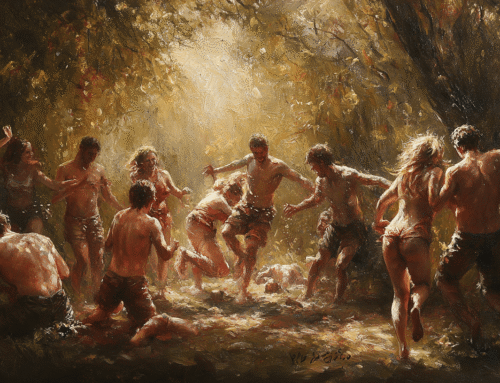“The goal is not to fit in. The goal is to be yourself, unapologetically and without compromise.”
– Rick Rubin
Few figures in the creative world have shaped culture as profoundly as Rick Rubin. From working with legends across genres — from Johnny Cash to Jay-Z — Rubin has long been revered not only as a producer but as a spiritual guide for creators.
In The Creative Act: A Way of Being, Rubin offers a collection of poetic insights, meditations, and mindsets designed to help unlock the artist within each of us. This is not a book about music. It’s about life, art, presence, and truth.
Let’s explore the core ideas and practical strategies from Rubin’s masterpiece — and how you can use them to cultivate a more creative and fulfilled life.
1. Creativity Is Our Natural State
Rubin opens the book with a radical idea: creativity is not reserved for artists. It is our birthright as human beings. Whether you’re painting, parenting, writing, or building a business — if you’re bringing something into being that didn’t exist before, you are creating.
Creativity is less about talent and more about tuning in. It’s about seeing differently, listening deeply, and being receptive to the signals all around us.
“The artist’s job is not to judge, but to notice.”
🎯 Key Idea: You don’t need to become creative. You just need to remove the interference.
2. The Artist Is a Receiver
Rubin challenges the myth that creators “make” things from scratch. Instead, he says that ideas already exist in the ether, and the artist’s job is to become a sensitive receiver.
Like a radio tuning into a frequency, your job is to clear your internal static and become a vessel for what wants to come through you.
“The work exists outside of you. You are just the antenna.”
🎯 Key Idea: Focus less on inventing and more on receiving. The art is already there.
3. Awareness Is the Gateway
The foundational practice in Rubin’s philosophy is awareness. The ability to pay attention — without distraction, without judgment — is what separates the average from the great.
This awareness applies to:
-
Emotions
-
Environments
-
Internal resistance
-
What excites or repels you
The more present you are, the more you notice what’s asking to be expressed through you.
🎯 Key Idea: Cultivate presence like a discipline. Creativity lives in the now.
4. Embrace the Unknown
Most people fear not knowing. Rubin invites us to love it.
The unknown is where the magic lives. It’s the blank canvas. The void before the breakthrough. You don’t need a roadmap — just a willingness to explore, fail, learn, and follow your curiosity.
“The best art feels like discovery. Like something ancient you just remembered.”
🎯 Key Idea: Let go of needing certainty. Create anyway.
5. Detach From Outcomes
Rubin insists that great work is born from process, not pressure. If you’re focused on how it will be received, you’ll dilute the truth of the work. Instead, focus on making something honest. Something that moves you.
Once it’s released, let it go. Your job was to deliver the message. How it lands is not your responsibility.
🎯 Key Idea: Create to express, not to impress.
6. Rules Are Made to Be Broken
The book encourages artists to respect structure but not be enslaved by it. If a technique or tradition supports the work — use it. If it restricts you — bend or break it.
Rubin sees genre, tools, and even “success” as illusions. True creativity demands freedom. Your only loyalty is to the work itself.
🎯 Key Idea: Use tools. Don’t become one.
7. Follow the Energy
Rubin’s approach is rooted in intuition. He urges creators to follow what feels alive. If a project feels exciting — pursue it. If it feels heavy — step back.
Instead of forcing progress, trust the rhythm. The energy of the idea will tell you what it needs.
🎯 Key Idea: Curiosity is a compass. Respect it.
8. Constraints Are Catalysts
Paradoxically, Rubin believes that limitations often unlock creativity. A time constraint, a budget, a single instrument — these boundaries can focus the mind and inspire innovation.
Instead of seeing them as roadblocks, view constraints as prompts. Ask: “What can I do within these limits?”
🎯 Key Idea: Use limitations to spark originality.
9. The Art of Editing
Rubin reminds us that creation is not just making — it’s refining. The first draft is not the final work. Once the idea is born, you step into the role of sculptor.
The editing phase requires honesty. Is this essential? Is this aligned? What needs to be removed so the essence shines through?
🎯 Key Idea: Great art is less about adding and more about subtracting.
10. Live Like an Artist
This book is ultimately not about projects — it’s about posture. Rubin proposes that creativity is a way of being. It’s how you live, how you see, how you respond to life.
Every moment becomes material. Every experience — joyful or painful — becomes texture.
“To live as an artist is to be in a constant state of becoming.”
🎯 Key Idea: Treat your life as a living work of art.
Core Themes at a Glance
| Theme | Takeaway |
|---|---|
| Creativity is innate | Everyone is an artist if they choose to be. |
| Tune into ideas | Your job is to receive, not invent. |
| Embrace the unknown | Magic happens when you don’t control the outcome. |
| Process > product | Create for expression, not applause. |
| Be present | All inspiration lives in the now. |
Implementing Rick Rubin’s Strategy: A Creative Life in Practice
Let’s turn Rubin’s philosophy into practical daily habits and choices you can adopt, starting today.
🧘♂️ 1. Build a Daily Awareness Practice
-
Start with 10 minutes of meditation or silence.
-
Journal what you notice — thoughts, sensations, ideas.
-
This develops the “receptive muscle” Rubin emphasizes.
📝 2. Make Something Every Day
-
Write a sentence.
-
Sketch a shape.
-
Hum a tune.
The act matters more than the outcome. It keeps the channel open.
🌀 3. Follow What Feels Alive
Each morning, ask:
“What feels creatively exciting today?”
Let that guide your focus. Don’t force what feels flat.
✂️ 4. Practice Subtraction
At the end of any creative session:
-
Remove one element.
-
Ask: “What’s the simplest version of this?”
Less is often more.
🚫 5. Release the Outcome
When you share work:
-
Do it without checking stats for 24 hours.
-
Detach from comments, likes, or reactions.
Your job is the making, not the metrics.
🎧 6. Tune In Throughout the Day
Rubin sees every moment as a chance to be inspired.
-
Go for walks without music.
-
Notice shapes, sounds, and light.
-
Record thoughts as they come — even mid-shower.
⏳ 7. Embrace Constraints
Pick one constraint per week:
-
“Only create using my phone.”
-
“Only use three colors.”
-
“Only write for 20 minutes.”
Let boundaries spark brilliance.
📚 8. Study All Art Forms
Rubin draws from painting, architecture, poetry, and nature. So should you.
-
Read something outside your field.
-
Visit a gallery.
-
Watch a documentary on an unfamiliar topic.
Inspiration cross-pollinates.
🔁 9. Revisit Old Work
Go back to something unfinished. With fresh eyes, you may see what was missing.
Use Rubin’s lens: “What wants to emerge from this now?”
🌀 10. Redefine Success
Replace metrics with these questions:
-
Was I honest?
-
Did I follow my curiosity?
-
Did I enjoy the process?
If yes, you’re already winning.
Final Thoughts: A New Way of Being
Rick Rubin’s The Creative Act is not a manual. It’s a mirror. It reflects back your own potential — the genius already living inside you, waiting to be noticed, welcomed, expressed.
In a world obsessed with speed and scale, Rubin offers a soft, slow, deeply spiritual reminder:
“The path of the artist is not to go somewhere, but to become someone.”
So take the pressure off. You’re not behind. You’re not blocked. You’re exactly where you need to be.
Start where you are. Use what you have. Let the next idea come through.
5-4-3-2-1… Create.






